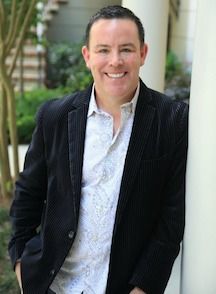A four year-old-boy is pulled, flatlining, from the bottom of a lake, and rushed to the emergency room. No one knows how long he was underwater, they can only say that CPR was administered, and the boy showed no response. The doctor on call, David Hilfiker, drops everything. Dashing to the operating room, he lets his practiced hands take over.
Seconds, then minutes tick by; no response…ten, fifteen, twenty minutes, and the boy hasn’t so much as dilated a pupil. After an hour of superhuman effort, there’s still nothing…no breath, not a heart murmur. Dr. Hilfiker averts his eyes as the boy’s body is carted off. He shuffles back to his desk, sits, and sinks his face into his palms. “I’m not sure I can take this today,” he says.
It’s days like these that chip away like nothing other, according to Dr. Hilfiker. His book, “Healing the Wounds,” paints a motif, vivid and tragic, of the stresses doctors face every day on the job.
Imagine trying to think clearly when there’s not a second to spare, to make the most important decisions in a young child’s life when everything hangs in the balance.
It takes a rare caliber of human to devote one’s years to preserving those of others. Geoffrey Riley, an associate professor at the University of Western Australia’s School of Psychiatry and Neuroscience, notes in a study the common character traits of doctors: obsessive willpower, intelligence, conscientiousness, commitment.
These are powerful traits, however combined they leave a gaping vulnerability: a predisposition for stubbornness and perfectionism, and a penchant for taking failure personally. After all, at the end of the day, one doctor made the defining decision, and they and their patients must live with it — or not.
Eventually, physicians are faced with the realization that they can’t heal everyone. Some of them cope; about half, according to a study involving 7,000 doctors. The other 49% suffer acutely from workplace burnout, a condition characterized by cynicism, deep emotional drainage, and a nonexistent sense of personal fulfillment.
When this happens, we lose the medical heroes we need most. Doctors carry the weight of hundreds of lives on their shoulders, and they do it without sufficient support.
Some of the efforts that have been put in place to support doctors’ efforts are backfiring and exacerbating the harm. The feelings of detachment and indifference which mark the onset of burnout can be compounded by the impersonal nature of electronic tech. Importantly, Research published in Mayo Clinic Proceedings examined the work lives of 6,560 US physicians, and found a strong correlation between burnout, and work hours spent using digital tech.
“The introduction of computers into the examination room has the potential to shift physicians’ focus away from the patient and the human interaction, which is a source of meaning for doctors,” the study comments.
The electronic disconnect adding stress to doctors’ already trying days further highlights a dire need to tackle burnout before it happens, and offer treatment when it does. We need to call upon hospitals to be much more conscientious and intentional about the introduction of new technologies to the sacred patient-doctor relationship. Most importantly, doctors needs to be trained not only on medical skill, but on coping strategies for what is almost guaranteed to be a grueling career, coping strategies that connect them to clear-headed thought, stress-relief, and the inherent meaning in their valuable work.


